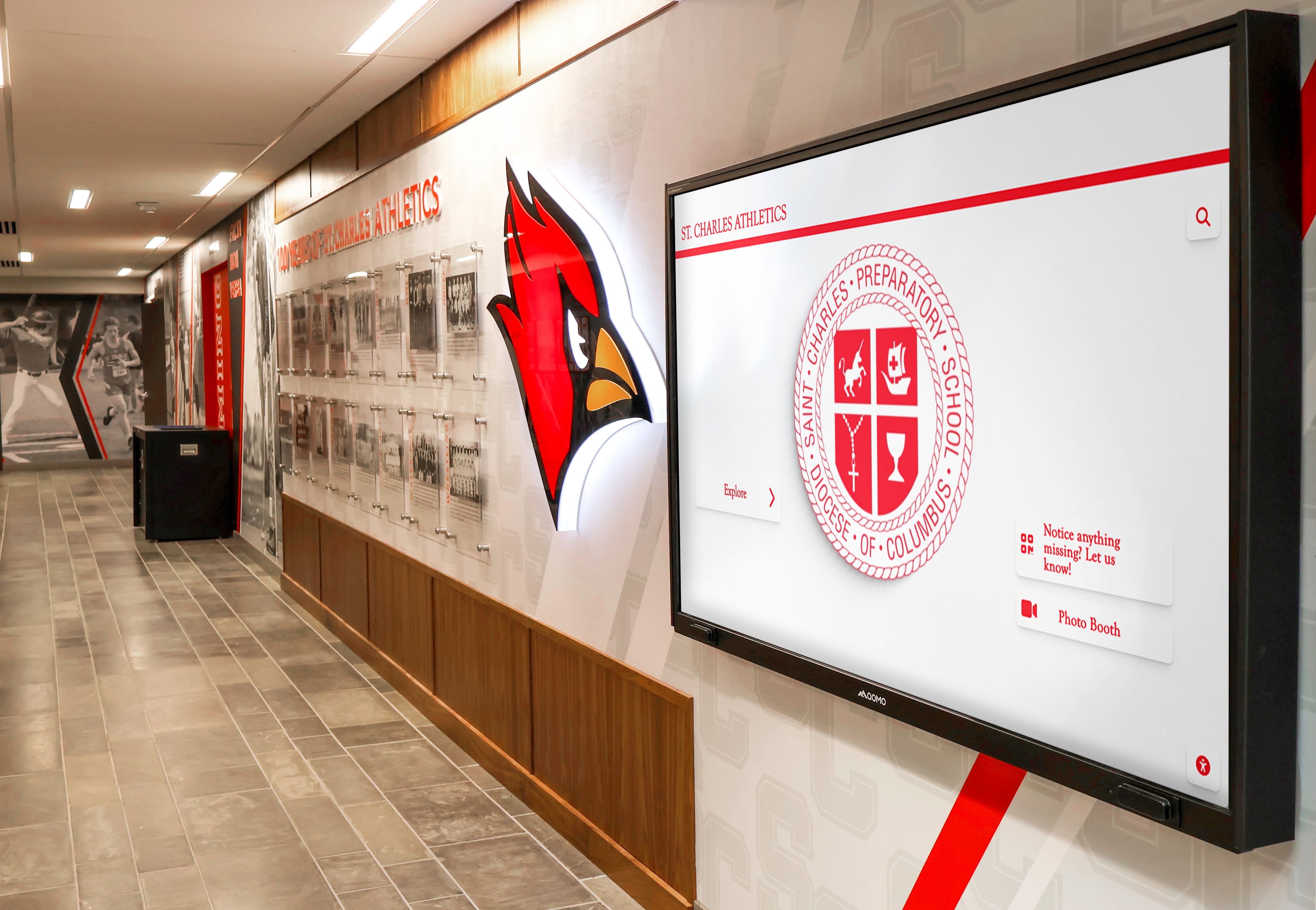Teachers represent far more than curriculum deliverers or classroom managers. They serve as mentors guiding students through formative years, innovators developing new approaches to persistent challenges, counselors supporting students through personal struggles, role models demonstrating integrity and perseverance, and community builders creating the connections that make schools feel like families. The multifaceted nature of teaching means that excellence takes countless forms—from the veteran educator who has shaped generations to the first-year teacher bringing fresh energy and innovative approaches.
Recognition programs acknowledging this excellence serve critical institutional purposes. They validate educators’ daily efforts and long-term dedication, demonstrate that schools notice and value exceptional contribution, provide public acknowledgment strengthening professional identity, create aspirational models inspiring colleagues and students, preserve institutional memory honoring those who shaped school history, support recruitment by showcasing commitment to faculty appreciation, and strengthen retention by reinforcing that careers at the institution bring meaningful recognition.
However, many schools struggle with teaching awards programs that feel perfunctory, exclusive, or disconnected from what truly motivates educators. The same handful of teachers receive recognition year after year while others’ contributions go unacknowledged. Selection criteria remain unclear or inconsistently applied. Traditional plaques disappear into storage rooms rather than creating lasting visibility. In an era when teacher burnout and turnover reach crisis levels in many regions, thoughtful recognition programs represent strategic investments in institutional health and educational quality.
Understanding Different Types of Teaching Recognition
Comprehensive teaching awards programs acknowledge diverse forms of educator excellence rather than narrow definitions focusing exclusively on test scores or longevity.
Excellence in Instruction and Pedagogy
Teaching excellence in its most traditional sense involves the art and science of instruction—educators who consistently demonstrate innovative teaching methods, deep content mastery, exceptional classroom management, and ability to reach diverse learners. Instructional excellence awards celebrate teachers whose students consistently show strong academic growth, who develop creative approaches engaging reluctant learners, who differentiate instruction meeting varied student needs, and who maintain positive classroom environments conducive to learning.
When recognizing instructional excellence, consider both quantitative measures like student achievement data and qualitative evidence including peer observations, student testimonials, and innovative curriculum development. Outstanding instruction manifests differently across subjects, grade levels, and student populations—recognition criteria should acknowledge this diversity rather than applying one-size-fits-all standards.

Mentorship and Student Support
Some educators’ greatest contributions extend beyond curriculum delivery to include the mentorship and personal support that transforms student lives. Mentorship excellence involves teachers who build strong relationships enabling trust and vulnerability, provide guidance helping students navigate personal and academic challenges, advocate for students facing obstacles, maintain high expectations while offering unwavering support, and create safe spaces where students feel valued and understood.
These contributions often remain invisible in quantitative metrics but prove profoundly impactful. Recognition categories specifically honoring mentorship ensure that teachers whose impact centers on relationships and character development receive acknowledgment equal to those whose excellence manifests primarily through academic results. Solutions like digital staff recognition displays can showcase these diverse contributions effectively.
Innovation and Educational Leadership
Educational innovation drives continuous improvement, and teachers who pioneer new approaches deserve special recognition. Innovation excellence includes educators who develop novel curricula addressing emerging needs, integrate technology effectively enhancing learning experiences, create programs filling gaps in existing offerings, contribute to professional learning communities sharing expertise with colleagues, and lead school improvement initiatives advancing institutional effectiveness.
Innovation recognition celebrates teachers as professionals contributing to educational advancement rather than simply implementing prescribed curricula. These awards signal institutional values around continuous improvement and professional growth.
Community Engagement and Partnership Building
Outstanding teachers often extend their impact beyond classroom walls through community connections and partnership development. Community engagement excellence involves educators who organize service learning connecting academics to real-world impact, establish partnerships with businesses and organizations providing student opportunities, lead extracurricular activities enriching student experiences, coordinate events strengthening school-community bonds, and represent institutions positively in broader communities.
These contributions build social capital benefiting entire institutions while creating opportunities students might not otherwise access. Recognition acknowledging community engagement validates that teaching excellence encompasses more than what happens during formal instructional time.
Lifetime Achievement and Long-Term Impact
Some teaching contributions accumulate over decades of dedicated service. Lifetime achievement recognition honors educators who have shaped generations of students through sustained excellence, contributed to institutional culture and tradition over extended careers, mentored numerous colleagues who themselves became outstanding teachers, demonstrated unwavering commitment through institutional changes and challenges, and built programs or traditions that outlive individual careers.
Lifetime achievement awards differ from annual excellence recognition by acknowledging cumulative impact and sustained contribution rather than single-year accomplishment. These honors often prove particularly meaningful to veteran educators approaching retirement, validating that decades of dedication have been noticed and valued.

Emerging Educator Excellence
Early-career teachers bring fresh perspectives, energy, and innovative approaches that invigorate institutions. Emerging educator recognition celebrates promising teachers in their first several years who demonstrate exceptional instructional skills despite limited experience, show remarkable growth and professional development, bring innovative ideas and approaches to established programs, build strong student relationships quickly, and demonstrate commitment suggesting long, impactful careers.
Recognizing emerging educators validates their contributions while encouraging continued growth and institutional commitment during formative career years when turnover risks run highest. These awards signal that recognition doesn’t require decades of tenure—excellence at any career stage merits acknowledgment.
Designing Effective Teaching Awards Selection Processes
Selection processes determine whether teaching awards feel fair, meaningful, and motivating or become predictable exercises that fail to inspire or may even create resentment among excluded educators.
Establishing Clear Selection Criteria
Transparent criteria represent the foundation of credible teaching awards programs. Effective criteria development involves articulating specific, observable indicators of excellence for each award category, balancing quantitative measures with qualitative evidence, documenting criteria publicly ensuring transparency, establishing minimum qualifications like years of service or professional credentials, and defining what disqualifies candidates from consideration.
Well-defined criteria help nominators understand what warrants recognition, assist selection committees in making consistent decisions, and demonstrate to the entire faculty that awards reflect genuine accomplishment rather than favoritism or politics. When teachers understand exactly what earns recognition, criteria themselves become motivational tools guiding professional practice toward valued behaviors and outcomes.
Creating Inclusive Nomination Processes
Nomination processes determine whose contributions receive consideration. Inclusive approaches involve multiple nomination sources including administrators, colleagues, students, parents, and alumni, simple nomination procedures minimizing administrative burden, clear timelines and deadlines providing adequate opportunity, nomination forms guiding thoughtful submissions with specific evidence, and confidential processes protecting nominators and candidates from awkwardness if recognition isn’t awarded.
Multiple nomination sources prove particularly important because different stakeholders observe different dimensions of teaching excellence. Administrators may recognize leadership contributions invisible to students, while students and parents witness relationship-building and personal support that colleagues might not see. Comprehensive nomination processes capture the full scope of educator contribution rather than limiting recognition to what single perspectives notice.
Forming Representative Selection Committees
Selection committee composition significantly influences award credibility and perceived fairness. Effective committees include diverse representation across departments, grade levels, and demographic characteristics, both veteran and newer faculty members, administrator participation balanced with teacher voice, student and parent representation where appropriate, and rotating membership preventing entrenched voting blocs or predictable patterns.
Representative committees bring varied perspectives preventing narrow definitions of excellence while building confidence across the faculty that selection decisions reflect balanced judgment rather than individual bias or administrative preference. Committee diversity proves especially important in institutions where faculty represents diverse backgrounds, ensuring that excellence in all its forms receives recognition.

Balancing Confidentiality and Transparency
Teaching awards programs must navigate tensions between confidentiality protecting candidates and transparency building trust. Effective approaches maintain nominee confidentiality during selection, publish clear criteria and processes publicly, share selection timelines broadly, provide rationale for decisions when appropriate, and create appeal mechanisms addressing legitimate concerns.
Complete secrecy about processes and decisions breeds suspicion that awards reflect favoritism rather than merit. Conversely, excessive transparency about nominations and deliberations creates awkwardness and may discourage honest assessments. Thoughtful programs balance these competing concerns through transparency about processes and criteria with confidentiality about specific nominations and committee discussions.
Modern Recognition Presentation and Preservation
How schools present and preserve teaching recognition significantly influences programs’ long-term impact on educator morale, school culture, and recruitment efforts.
Creating Memorable Recognition Ceremonies
Public recognition ceremonies provide important opportunities for community-wide celebration of educator excellence. Effective ceremonies include personal introductions highlighting specific contributions beyond simple name announcements, video tributes or testimonials from students, colleagues, or alumni, opportunities for honorees to address audiences and share reflections, professional presentation creating special experiences rather than rushed announcements, and family involvement allowing loved ones to participate in celebration.
Ceremonies should balance efficiency with meaningfulness. Marathon events where individual recognition becomes perfunctory fail to honor educators appropriately, while thoughtful ceremonies creating genuine celebration moments demonstrate that institutions truly value recognized contributions. Resources on teacher appreciation programs provide additional ceremony planning guidance.
Digital Recognition Display Advantages
Modern digital displays transform teaching recognition from momentary acknowledgment into permanent, accessible celebration. Digital recognition platforms enable comprehensive educator profiles with biographical narratives, career highlights, and teaching philosophies, multimedia content including photos, videos, and testimonials from students and colleagues, unlimited recognition capacity accommodating growing programs without space constraints, easy annual updates adding new recipients without physical modification, searchable databases helping visitors find specific educators or browse by department, and historical archives preserving institutional memory across decades.
Solutions like Rocket Alumni Solutions provide purpose-built platforms designed specifically for educational recognition, making implementation straightforward for schools without extensive technical expertise while delivering engaging experiences that resonate with contemporary audiences.

Integrating Recognition into School Culture
Teaching awards programs achieve maximum impact when integrated systematically into broader school culture rather than functioning as isolated annual events. Integration strategies include featuring recognized educators in school communications throughout the year, incorporating recognition into recruitment materials and campus tours, connecting honorees with prospective teachers as mentors or ambassadors, highlighting educator excellence during board meetings and community events, and creating opportunities for recognized educators to share expertise through professional development.
This ongoing integration keeps educator excellence visible year-round rather than limiting recognition to brief ceremony moments, reinforcing institutional values around teaching quality while helping recognized educators serve as ambassadors advancing institutional reputation and recruitment efforts.
Balancing Traditional and Digital Approaches
Many schools find value in hybrid approaches combining traditional recognition elements with modern digital platforms. Hybrid programs might include physical plaques or awards presented during ceremonies complemented by comprehensive digital profiles providing deeper recognition, traditional displays in prominent locations featuring recent recipients while digital platforms archive complete program history, printed certificates for honorees’ personal collections alongside digital recognition accessible to broad audiences, and ceremonial recognition events supplemented by social media campaigns amplifying acknowledgment.
Hybrid approaches respect tradition while leveraging technology’s advantages for preservation, accessibility, and engagement. Understanding digital wall of fame benefits helps schools make informed decisions about recognition platform investments.
Funding and Sustaining Teaching Awards Programs
Budget realities influence what recognition programs schools can implement and maintain long-term. Strategic funding approaches ensure programs remain sustainable rather than becoming casualties of budget constraints.
Identifying Funding Sources
Multiple funding sources can support teaching awards programs including school operating budgets when leadership prioritizes recognition as core investment, parent-teacher organization contributions supporting educator appreciation, alumni association funding honoring teachers who shaped graduates’ lives, community business sponsorships partnering with schools, educational foundation grants focusing on school culture and retention, and fundraising campaigns dedicated specifically to educator recognition.
Diversified funding provides more stable support than relying on single sources potentially subject to budget cuts or changing priorities. When multiple constituencies contribute financially, they also develop ownership stakes in program success.
Understanding Program Costs
Teaching awards program budgets typically include ceremony expenses like venue, refreshments, programs, and audiovisual equipment, recognition items including plaques, certificates, trophies, or modest gifts, technology platform licensing or purchase if implementing digital recognition displays, display hardware including touchscreens, mounts, and installation, professional photography or videography documenting award recipients, communication and promotion expenses, and staff time coordinating nominations, selection, and ceremonies.
Costs vary dramatically based on program scope and implementation approaches. Simple programs with basic certificates and modest ceremonies might cost several hundred dollars annually, while comprehensive programs with digital displays, professional production, and elaborate ceremonies may require several thousand dollars initially plus ongoing annual expenses. Resources on digital trophy case implementation provide budget planning guidance.

Maximizing Value and Impact
Even modest budgets can support meaningful recognition through strategic choices. Cost-effective approaches include student-created recognition content as authentic learning projects, volunteer photography from parent or community volunteers, digital-first recognition reducing ongoing material costs, simple but sincere ceremonies focusing on personal acknowledgment over elaborate production, phased implementation starting with core awards and expanding as funding allows, and free or low-cost digital platforms providing basic recognition capabilities.
Recognition’s value stems primarily from genuine acknowledgment and public visibility rather than expensive production or materials. Thoughtful programs on limited budgets often prove more meaningful than elaborate productions that feel impersonal or perfunctory.
Measuring Teaching Awards Program Success
Assessment enables continuous improvement while demonstrating program value to leadership deciding on continued investment and resource allocation.
Defining Success Metrics
Appropriate metrics depend on program goals but typically include participation indicators like nomination volume and diversity, teacher satisfaction measured through surveys, retention rates comparing recognized teachers to overall faculty, recruitment effectiveness using recognition in hiring conversations, student and parent awareness of teaching excellence, community perception reflected in surveys or media coverage, and giving impact tracking whether recognition correlates with philanthropic support.
Comprehensive measurement examines both program implementation quality and downstream effects on recruitment, retention, and institutional culture. While some impacts prove difficult to attribute directly to recognition programs, tracking multiple indicators over time reveals patterns suggesting program effectiveness.
Gathering Educator Feedback
Direct input from educators provides essential perspective on program effectiveness and improvement opportunities. Feedback mechanisms include post-ceremony surveys assessing recognition experience quality, annual program reviews soliciting suggestions, focus groups exploring themes in depth, exit interviews with departing teachers understanding whether recognition influenced retention decisions, and informal conversations during routine interactions.
Educator feedback reveals whether recognition feels meaningful or perfunctory, fair or biased, motivating or demotivating. Programs that fail to motivate or that create resentment among educators not recognized require refinement regardless of administrative perspectives on quality.
Continuous Program Refinement
Teaching awards programs should evolve based on experience, feedback, and changing institutional contexts. Refinement approaches include annual criteria review ensuring continued relevance and fairness, category additions or modifications addressing recognition gaps, process improvements reducing administrative burden or increasing transparency, timing adjustments optimizing engagement and impact, and communication enhancements reaching broader audiences more effectively.
Programs that remain static for years often decline in effectiveness as they fail to adapt to changing faculty demographics, institutional priorities, or recognition expectations. Continuous improvement maintains relevance while demonstrating institutional commitment to getting recognition right.

Special Considerations for Different School Types
While core recognition principles apply broadly, different institutional contexts benefit from tailored approaches reflecting unique cultures, priorities, and challenges.
K-12 Public School Recognition
Public K-12 schools often navigate union considerations, diverse stakeholder interests, and budget constraints requiring particular attention. Public school approaches might emphasize objective criteria minimizing perception of favoritism, union involvement in program design ensuring teacher voice, broad award categories creating numerous recognition opportunities, community involvement building public support and understanding, and integration with existing teacher evaluation systems where appropriate.
Public school recognition programs serve dual audiences—educators themselves and broader communities whose tax dollars fund education. Recognition demonstrating teaching quality to communities can strengthen public support while validating educators’ professional expertise.
Independent and Private School Recognition
Independent schools often enjoy greater flexibility in recognition program design while serving communities with high expectations for teaching quality. Private school approaches might leverage alumni networks eager to honor influential teachers, create signature recognition programs differentiating the school, integrate recognition with mission-specific values and priorities, utilize parent involvement and financial support more extensively, and develop programs reflecting institutional culture and educational philosophy.
Private school recognition programs often connect closely with advancement priorities, with educator excellence serving as compelling evidence of educational quality during fundraising and recruitment conversations.
Higher Education Faculty Recognition
University and college teaching awards address different faculty roles and responsibilities. Higher education recognition often includes research excellence alongside teaching quality, distinguishes between tenure-track and adjunct faculty recognition, acknowledges diverse faculty contributions including graduate student mentorship, balances teaching with research, service, and clinical contributions, and connects recognition to tenure and promotion processes.
Higher education teaching awards may carry particular professional significance given faculty career progression’s dependence on demonstrated excellence across teaching, research, and service. Resources on college recognition programs provide additional institutional context.
Addressing Common Recognition Program Challenges
Even well-designed teaching awards programs encounter predictable challenges. Anticipating and addressing these concerns strengthens programs and maintains educator confidence in recognition fairness and value.
Same Educators Repeatedly Recognized
Common complaints involve identical teachers receiving multiple awards year after year while others never experience recognition. Address through diversified award categories creating multiple recognition pathways, policies limiting how many awards individual teachers can receive annually or consecutively, improved nomination processes surfacing broader candidate pools, deliberate monitoring of recognition distribution patterns, and recognition of different excellence dimensions ensuring competitive advantages don’t concentrate all awards.
While truly exceptional educators deserve recognition, programs that become predictable lose motivational value for most faculty who perceive awards as unattainable regardless of effort or improvement.
Perceived Bias or Favoritism
Recognition programs risk appearing biased when selection processes lack transparency or certain teachers receive disproportionate recognition. Prevent perceptions of favoritism through clear, published selection criteria, diverse selection committees representing multiple perspectives, documentation of specific accomplishments justifying each award, multiple nomination sources beyond administrative preferences, and regular review of distribution patterns across departments and demographics.
Even fair programs can appear biased if processes remain opaque or if distribution patterns create appearance of favoritism. Transparency and consistent application of documented criteria provide the strongest defense against favoritism concerns.

Administrative Burden and Sustainability
Recognition programs consuming excessive staff time often become inconsistent or eventually abandoned. Manage workload through digital platforms automating nomination, selection, and documentation processes, clear, streamlined procedures reducing unnecessary complexity, designated program coordinators rather than adding to already-overwhelmed administrators, student involvement in content creation as authentic learning, and efficient workflows for photography, profile creation, and ceremony planning.
Sustainable programs balance recognition quality with realistic assessment of available staff time and resources, avoiding elaborate procedures that prove impossible to maintain consistently.
Maintaining Meaningful Standards
When too many educators receive recognition or standards become too low, awards lose motivational value. Maintain meaningful recognition through consistent application of established criteria, periodic criteria review ensuring appropriate rigor, quality over quantity in recognition volume, focus on genuine accomplishments requiring effort rather than mere participation, and willingness to have some years with fewer recipients when fewer educators meet criteria.
Recognition that everyone receives regardless of performance becomes meaningless. Effective programs maintain standards making awards genuinely special while ensuring criteria remain realistically achievable through effort and excellence.
Enhancing Programs Through Technology Integration
Modern technology platforms transform teaching recognition from administrative tasks into strategic engagement tools supporting multiple institutional priorities simultaneously.
Comprehensive Digital Recognition Platforms
Purpose-built recognition platforms provide integrated capabilities including intuitive content management requiring no technical expertise, searchable educator databases enabling visitor discovery, multimedia support for photos, videos, and documents, responsive design ensuring proper display across devices, cloud-based hosting eliminating server requirements, regular updates and improvements, analytics providing engagement insights, and role-based permissions enabling appropriate access.
Solutions like Rocket Alumni Solutions deliver these capabilities specifically designed for educational institutions, while general website builders require extensive customization and ongoing technical maintenance. Understanding touchscreen software options helps schools select appropriate platforms.
Mobile and Remote Access
Digital recognition programs extend impact beyond physical campus locations through web-based platforms accessible globally, mobile-optimized design supporting smartphone viewing, synchronized content ensuring consistency across platforms, social sharing features amplifying recognition reach, and virtual ceremony options connecting remote participants.
Mobile access proves particularly valuable for connecting with alumni, prospective teachers, and community members who may never visit campuses but value visibility into educator excellence. Multi-platform availability dramatically expands recognition reach while supporting advancement and recruitment objectives.
Analytics and Program Assessment
Digital platforms provide detailed analytics impossible with traditional recognition including visitor counts and traffic patterns, engagement duration and depth, content performance showing popular profiles, search behavior revealing discovery patterns, demographic data when available, and conversion tracking for recruitment or fundraising.
Analytics transform recognition from faith-based investment into measurable programs demonstrating clear impact on institutional priorities. Data-driven insights enable continuous improvement focused on highest-impact enhancements rather than assumptions about what engages audiences effectively.

Connecting Recognition to Retention and Recruitment
Teaching awards programs can advance strategic workforce objectives when designed with retention and recruitment explicitly in mind.
Recognition Impact on Teacher Retention
Research on teacher retention consistently identifies recognition and appreciation among factors influencing career satisfaction and persistence decisions. Recognition supports retention by validating that dedication and excellence are noticed and valued, providing public acknowledgment strengthening professional identity, creating collegial culture where educators feel appreciated, demonstrating institutional commitment to faculty welfare, and offering career milestones and achievements sustaining long-term engagement.
While recognition alone cannot overcome systemic challenges like inadequate compensation or poor working conditions, thoughtful appreciation programs strengthen the non-monetary factors that significantly influence teachers’ decisions to stay or leave institutions.
Leveraging Recognition in Teacher Recruitment
Comprehensive recognition programs provide compelling recruitment advantages by demonstrating institutional culture valuing and celebrating teaching excellence, showcasing existing faculty quality through honored educators, signaling professional respect and appreciation candidates seek, differentiating institutions in competitive labor markets, and creating ambassador networks of recognized educators who recruit colleagues.
During recruitment conversations and campus visits, prospective teachers evaluate whether schools genuinely value teaching or merely give lip service to appreciation. Established recognition programs with visible honored educators provide tangible evidence of appreciation culture that words alone cannot convey. Guidance on recruitment through recognition programs offers additional strategic approaches.
Future Trends in Teaching Recognition
Understanding emerging trends helps institutions implement recognition programs that remain relevant as technology and expectations evolve.
Personalized Recognition Experiences
Technology increasingly enables personalized recognition tailored to individual educators’ contributions and preferences. Personalization approaches include customized recognition categories reflecting diverse excellence dimensions, educator input on recognition preferences and celebration formats, personalized content highlighting specific accomplishments and contributions, adaptive presentation formats matching individual comfort levels, and choice in recognition publicity respecting varying preferences.
Personalized recognition acknowledges that educators value different recognition forms—some embrace public celebration while others prefer quieter acknowledgment. Flexible programs accommodate these preferences while ensuring all educators receive meaningful appreciation.
Continuous Recognition Models
Traditional annual awards are supplementing with ongoing recognition capturing real-time excellence. Continuous recognition includes regular spotlights featuring different educators throughout the year, milestone celebrations marking career achievements as they occur, immediate acknowledgment of exceptional contributions without waiting for annual cycles, digital platforms enabling rolling recognition updates, and micro-recognition capturing smaller contributions complementing major awards.
Continuous models maintain recognition visibility year-round rather than concentrating appreciation into brief annual windows, creating consistent appreciation culture rather than sporadic acknowledgment.
Integration with Professional Development
Recognition programs increasingly connect to ongoing professional growth. Integration approaches include recognition criteria explicitly valuing professional development participation, honored educators sharing expertise through workshops or mentoring, awards funding continuing education or conference attendance, public recognition highlighting instructional innovations and best practices, and programs celebrating learning and growth alongside accomplished excellence.
These connections reinforce that teaching excellence requires continuous learning while creating valuable knowledge-sharing mechanisms where recognized educators’ expertise benefits broader faculty populations.

Conclusion: Building Culture Through Educator Recognition
Teaching awards programs represent far more than annual ceremonies and certificates. When implemented thoughtfully, these programs create systematic recognition that validates educator dedication, demonstrates institutional priorities, inspires professional excellence, preserves institutional memory, strengthens recruitment and retention, builds positive culture where teaching quality flourishes, and publicly celebrates the educators who shape student lives and institutional success.
Effective modern teaching awards programs balance tradition with innovation, honor absolute excellence alongside growth and improvement, maintain meaningful standards while creating inclusive opportunities, leverage digital technology for engagement and preservation, provide both immediate impact and long-term visibility, integrate with advancement and workforce priorities, and demonstrate sustained institutional commitment across leadership changes and budget pressures.
The most successful teaching awards programs share common characteristics including comprehensive categories celebrating diverse forms of excellence, clear and transparent selection criteria applied consistently, engaging presentation formats resonating with contemporary audiences, meaningful preservation through modern digital displays, authentic acknowledgment with specific accomplishment descriptions, strong connections to institutional mission and values, active stakeholder engagement throughout the process, continuous improvement based on evidence and feedback, and sustained commitment as core institutional investment in educator appreciation and school culture.
Key Principles for Teaching Awards Success:
- Establish comprehensive award categories celebrating diverse teaching excellence dimensions
- Create clear, transparent criteria balancing standards with inclusivity
- Implement modern digital platforms engaging audiences and preserving recognition permanently
- Provide specific, authentic acknowledgment rather than generic praise
- Monitor distribution patterns ensuring fair recognition opportunities
- Connect awards explicitly to institutional values and priorities
- Integrate recognition throughout the year and across institutional communications
- Assess effectiveness and continuously improve based on evidence
- Maintain sustained commitment as core component of institutional culture
- Leverage recognition strategically supporting retention and recruitment priorities
The investment schools make in educator recognition programs pays dividends through teacher satisfaction, retention, recruitment, school culture, community pride, and ultimately educational quality. Recognition communicates that institutions notice educators, value their efforts, celebrate their excellence, and believe teaching represents noble work deserving genuine appreciation. In an era when teaching faces unprecedented challenges and teacher shortages threaten educational quality, comprehensive recognition programs represent strategic investments in institutional health and sustainability.
Ready to transform how your school celebrates teaching excellence? Modern solutions like Rocket Alumni Solutions provide comprehensive platforms designed specifically for educational recognition, offering intuitive content management, engaging interactive displays, unlimited digital space for honored educators, and proven approaches that help schools build the positive recognition cultures educators deserve while supporting strategic workforce objectives.
Your educators shape student lives and institutional success every day—meaningful teaching awards programs ensure their dedication receives the celebration that inspires continued excellence, honors diverse contributions, and builds communities where outstanding teachers thrive and students flourish.




































